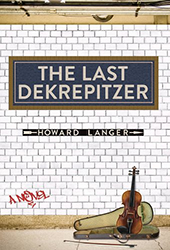Confronting the occasionally porous wall between writing a non-fiction survey and an introductory college textbook, Professors Rubin and Baron manage to poke through the barrier, stating that they write for those familiar with Judaic studies and those well versed in music, but who lack expertise in either. That challenge is handsomely fulfilled.
In Music in Jewish History and Culture, Rubin and Baron, after defining Jewish music, divide their study into five “historical interludes” as a narrative timeline. The book opens with biblical references citing how the early Jews were sparked by music in their liturgy and narrative. Then, after the first dispersion, musical usage reflects the Jews’ relationships to other contiguous groups, becoming the defining thread of the coming millennia.
The book has a smoothly informative style, notably in its challenging primer on cantillation — a distinctively Jewish form. Then, resuming the historical format, they examine musical influences ranging from medieval Islam, cantorial personalities, to Sephardic/Ashkenazic musical differences.
Rubin and Baron, however, necessarily accelerate their pace to deal with the dense, complex and information-ridden 19th – 21st centuries, climaxing with chapters on the Holocaust, and the American music scene. Oddly, they neglect entirely Hollywood film music — original scores for numberless films, created by Max Steiner, Alfred Newman (a forty-five time Oscar winner) Franz Waxman, Elmer Bernstein, Andre Previn, among many others. Two concluding chapters deal with Zionist Palestinian and Israeli music.
Commendable in style, editing, layout, typography, the book’s extensive reference materials ought to satisfy most readers.
Appendix, bibliography, charts, glossary, illustrations, index, tables.





